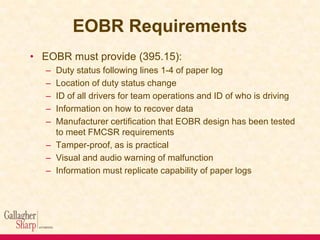

The enforcement people in Canada don’t recognize this use of Personal Conveyance that is legal in the USA. Here is the problem and what the Canadian enforcement officers see.

Since the PC USA rule was changed, I thought the example above was legal in the United States and in Canada.
NEW FMCSA PERSONAL CONVEYANCE RULE DRIVER
I hate to tell you, but in the above example, when that driver gets into Canada, he/she could be put out of service (OOS). You are legal in the United States.īut what happens when that same driver crosses the border into Canada? Is that driver legal here in Canada after having used the Personal Conveyance rule in the USA? You get to the truck stop and you go back into your sleeper-berth for the remaining six and a half hours. In this way, you remain in the off-duty area of the Hours of Service. It is the closest safe location for me, my truck and cargo. If you know about the personal conveyance rule for the USA, you might think, okay, I will move to a truck stop just thirty minutes down the road. Three hours into the ten hours of off duty, there is now a knock on the door and the driver is told that the company is locking up the gate and that they must move their truck. The driver heads into the bunk and goes to sleep. A driver is at a receiver’s facility and goes off-duty in the receiver’s yard. This is easily demonstrated by an example. They can move the unit to the nearest point of safety. So, what did the FMCSA allow? Let me paraphrase it this way: When a driver needs to move the truck, trailer and load while being off duty, they can. The changes can be a massive benefit to drivers. And with this new wording, it changed the use of PC significantly. A little over a year ago, the FMCSA clarified the law regarding ‘Personal Conveyance’ (PC) in the USA.


 0 kommentar(er)
0 kommentar(er)
